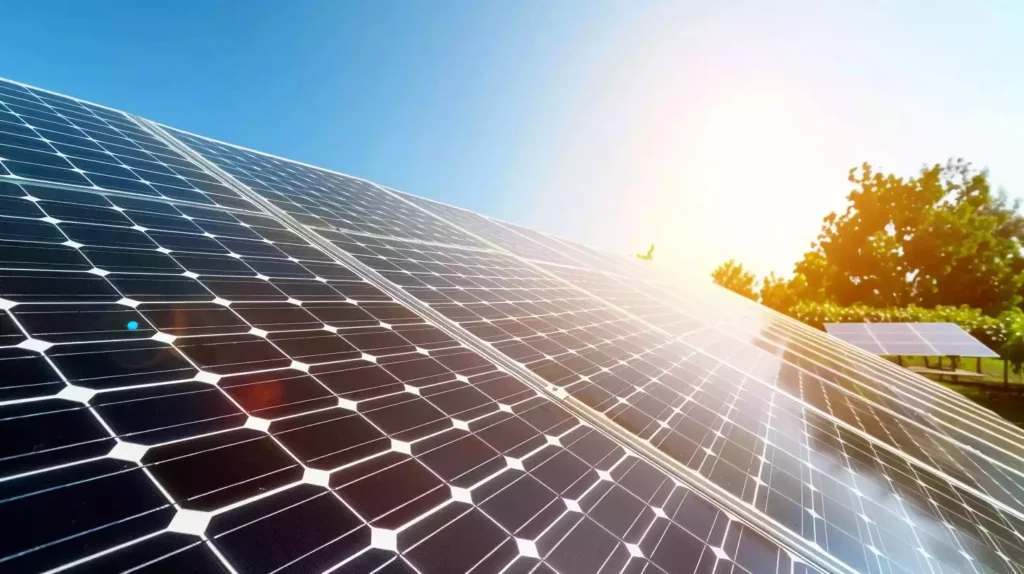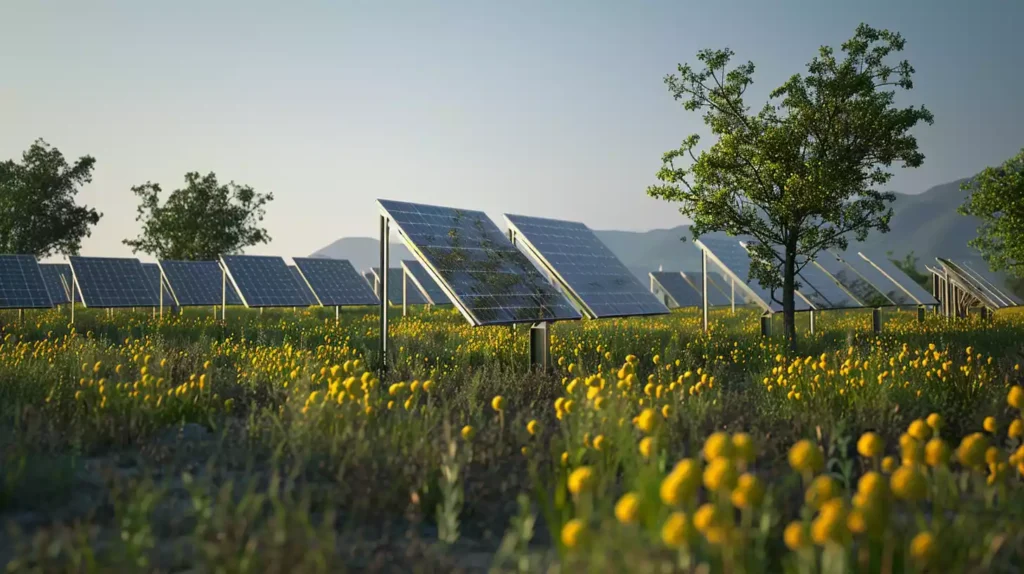Maximizing Solar Panel Output: Tips for Improved Efficiency
To boost solar panel performance, opt for high-efficiency panels like SunPower’s X-Series or LG’s NeON R. Position panels south for maximum sunlight exposure and clean regularly with mild soap. Dodge shading, even small shadows can hinder efficiency.
Select inverters with MPPT technology for enhanced energy harvest and monitor their performance vigilantly. Investigate advanced technologies to optimize energy use and consider battery storage or solar trackers.
These steps can supercharge your solar setup for peak efficiency and output.
Quick Summary
- Choose high-efficiency panels like SunPower’s X-Series for up to 22% efficiency.
- Ensure proper panel orientation southward and regular cleaning with mild soap.
- Minimize shading to avoid up to 20% efficiency loss and avoid using mirrors that may impact warranties.
- Optimize inverter performance with MPPT technology and monitor data for early issue detection.
- Utilize advanced technologies like smart inverters, battery storage, and solar trackers for enhanced performance.

High-Efficiency Solar Panels
When selecting high-efficiency solar panels, it’s crucial to consider the maximum energy production potential they offer. Companies such as SunPower and LG have developed top-notch solar panels with impressive efficiency ratings.
SunPower’s X-Series panels, utilizing Maxeon technology, boast up to 22% efficiency, guaranteeing you get the best out of your solar system.
LG’s NeON R panels, featuring monocrystalline cells, offer approximately 21.7% efficiency, providing excellent performance for your energy needs. Moreover, Panasonic’s HIT panels, incorporating heterojunction technology, reach up to 21.6% efficiency, perfect for high-performance solar setups.
REC goes a step further with their Alpha series panels, using HJT and N-type mono cells to achieve up to 21.7% efficiency, delivering superior energy output. Choosing high-efficiency solar panels like these ensures you maximize efficiency and get the most out of your renewable energy investment.
Proper Panel Orientation and Cleaning
To guarantee top performance of high-efficiency solar panels like SunPower’s X-Series and LG’s NeON R panels, proper panel orientation and regular cleaning are essential maintenance practices.
My best tip is to ensure they’re facing the right direction, which can greatly impact their efficiency. Here are three key points to take into account:
- Maximize Sunlight Exposure: Proper panel orientation, such as facing them south in the northern hemisphere, ensures ideal sunlight exposure, enhancing energy production efficiency.
- Regular Cleaning: Cleaning solar panels once or twice a year with mild soap and water is vital for maintaining peak performance levels. Dust and dirt buildup can reduce panel output by up to 20%, underscoring the importance of regular cleaning routines.
- Optimize Panel Angles: Adjusting panel angles seasonally based on your latitude can help maximize energy production efficiency throughout the year. Following manufacturer guidelines for cleaning, avoiding pressure washers, and choosing the right time of day for cleaning are key maintenance tips to uphold peak panel performance.
Minimizing Shading and Using Mirrors

Minimizing shading and utilizing mirrors can greatly enhance solar panel efficiency and energy production. Shading poses a significant threat, potentially reducing solar panel efficiency by up to 20% due to blocked sunlight on the cells.
To ensure peak performance, it’s essential to install panels away from shade sources like trees and buildings. Positioning them in unshaded areas guarantees uninterrupted sunlight exposure, maximizing energy production.
Even small shadows cast on panels can have a substantial impact on the system’s efficiency and output.
| Factors | Impact | Considerations |
|---|---|---|
| Shading | Reduces solar panel efficiency by up to 20% | Install panels in unshaded areas for optimal performance |
| Sunlight Exposure | Essential for maximum energy production | Position panels away from shade sources like trees and buildings |
| Shadows | Can have a significant impact on system efficiency | Ensure uninterrupted sunlight exposure for peak performance |
| Mirrors | Enhance energy absorption | Carefully consider the impact on warranties |
Using mirrors to redirect sunlight towards panels can boost energy absorption but may void warranties and require thoughtful consideration to maintain peak performance.
Optimizing Inverter Performance and Monitoring
Enhancing solar system efficiency involves optimizing inverter performance and implementing effective monitoring strategies to maximize energy production.
When it comes to inverters, there are various aspects to take into account:
- Types of Inverters: String inverters, microinverters, and power optimizers are commonly used to convert DC electricity from solar panels into AC electricity for household use, each offering unique benefits for different system setups.
- MPPT Technology: Advanced inverters equipped with Maximum Power Point Tracking (MPPT) technology can greatly improve energy harvest by continuously adjusting to attain the maximum power output from the solar panels.
- Importance of Monitoring: Regular monitoring of inverter data, including voltage levels, current flow, and energy production metrics, is vital for early issue detection, timely maintenance, and long-term optimization of the solar energy system’s performance.
Advanced Technologies and Energy Consumption
Monitoring energy consumption patterns and leveraging advanced technologies play a key role in optimizing solar panel performance. Efficient energy management is vital for enhancing solar cell efficiency and maximizing power generation.
By utilizing smart inverters, solar systems can achieve higher energy conversion rates, ensuring that generated electricity is used effectively.
Moreover, integrating battery storage systems into solar setups enables energy storage for later use, reducing grid dependency during low sunlight periods.
Furthermore, advanced technologies such as solar trackers help panels follow the sun’s path, ensuring they receive maximum sunlight exposure throughout the day.
These innovative solutions not only improve energy consumption during peak sunlight hours but also enhance overall system efficiency by reducing reliance on the grid.
Implementing energy management systems allows for better monitoring and adjustment of energy usage patterns, further optimizing solar panel performance.
